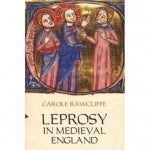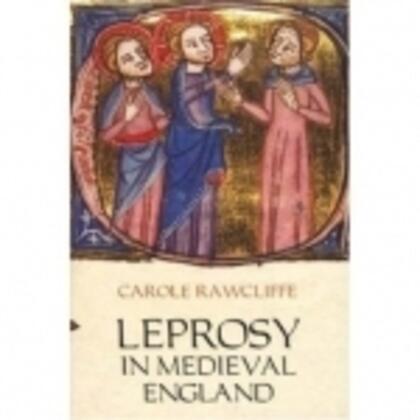22 June 2011
The Form and Function of Medieval Hospitals
Professor Carole Rawcliffe
I’d better come clean at the start of this lecture and admit that I’m on an evangelical mission – in so far that I want to liberate the medieval hospital from the shackles of misinformation and neglect. Despite the intensive research that has been undertaken on this remarkable institution over the last couple of decades, it still remains widely misunderstood. And it’s easy to see why. First of all, we have to contend with the destruction and loss of so much evidence, both documentary and architectural, largely as a result of the devastation caused during the English Reformation.
Between the very late eleventh century and the 1530s, a bare minimum of 1,300 hospitals and almshouses were founded in England. The approaches to every town and city were dominated by them, but almost all have completely disappeared from the landscape. We can readily appreciate the importance of medieval castles and monasteries because so many of them have been preserved under the auspices of the National Trust and English Heritage, but hospitals are more elusive. Those which do survive are all too often little more than picturesque ruins, giving no real clue as to their original size or function.
[SLIDES: St James, Dunwich – evidence of considerable investment
St Leonard, York – 200 beds, England’s largest hospital]
The sheer scale of what has been lost, notably here in London, is striking. Barely a stone of the 180-bed hospital of St Mary, Bishopsgate, near what is now Liverpool Street Station, remains standing today; yet in the early sixteenth century people entering or leaving the city from the north would have marvelled at this imposing building.
[SLIDE: St Mary, Bishopsgate, artist’s reconstruction]
Nor is it only the fabric of hospitals that has vanished. As you can see from this image, the larger English hospitals were indistinguishable from monasteries and generally followed a religious rule (like many others, St Mary’s was run by the Augustinian order). And as a result they were dissolved and often demolished in the 1530s, when Henry VIII was busy confiscating ecclesiastical property. So great was the loss of books and archives during the Reformation that we are now left with only a minute fraction of the evidence once available.
[SLIDE: St Bartholomew Smithfield, cartulary
St Mary Magdalen, Exeter, cartulary with music
St Giles, Norwich – archive now has UNESCO status
Same]
The task faced by historians like me in attempting to understand the structure, life and organisation of these institutions – let alone the minutiae of patient care – can therefore be very difficult.
But it’s not our only problem. Until recently, writing on the topic has been characterised by what can best be described as an anachronistic approach on the part of historians, whose idea of ‘the hospital’ was posited upon a post-Nightingale model. Because medieval hospitals were primarily religious institutions, whose form and function were very different from what we today might expect in the way of institutional care, our knee-jerk reaction is to dismiss them as ‘backward’ or ‘superstitious’.
[SLIDE: Confession, the medieval equivalent of A & E, became mandatory before medical treatment in 1215. Our task is to understand these priorities, in a society that privileged the health of the soul.]
English medieval hospitals, in particular, have come in for a striking degree of condescension, since, unlike the larger continental institutions, they did not employ the services of trained physicians, surgeons and apothecaries.
[SLIDE: Medical treatment on the wards by paid staff]
By the fifteenth century, for example, Santa Maria Nuova in Florence, Europe’s most famous hospital, boasted an impressive roster of three resident junior housemen, six senior physicians, who visited daily, a number of surgeons – including a specialist ophthalmologist – and a pharmacist.
[SLIDE: Ward at Santa Maria Nuova, Florence]
By contrast, so far as we know, the first English institution to recruit professionally qualified practitioners was the Savoy, which was carefully modelled by Henry VII on Santa Maria Nuova, and set up under the terms of his will in 1509.
[SLIDE: Plan of the Savoy – Note the Cruciform layout]
Historians have devoted an enormous – indeed, entirely disproportionate – amount of effort to the search for earlier evidence of what they deem to be ‘real’ medical practice in pre-Reformation English hospitals, but all to no avail. Of course, simply because physicians and surgeons weren’t on the payroll doesn’t mean that they were never encountered on the wards. As the 1479 will of the wealthy London mercer, John Donne, clearly reveals, philanthropists were happy to subsidise professional services for patients. He left a generous legacy of £25 so that the surgeon, Thomas Thornton, could:
continue in his daily business and comfort of the poor, sore and sick people lacking help and money to pay for their leech craft in London and the suburbs of the same: in particular in the hospitals of St Mary, St Bartholomew, St Thomas, Newgate [and] Ludgate, and in other places wherever people shall have need. And [he is] thus to continue by this grace for the space of five years after my decease.
But should we really be concentrating all our energies on hunting out scraps of information like this, simply because they resonate with our own ideas about what constitutes proper treatment? If we are to understand how medieval hospitals really functioned, we have to recognise that care can take many forms and should be assessed in the context of the social, and indeed spiritual, needs of the time, rather than by the standards of our own highly medicalised and technologically advanced society.
[SLIDE: Nurses and patients, Livre de la vie active, Paris]
For a start, it’s important to stress that hospitals were generally founded for the care of the sick poor, rather than the rich, who would have been treated at home. Only the wealthy could afford the services of a university-trained physician or surgeon; and, although successful practitioners were expected to undertake charity work, few members of the urban proletariat would ever have consulted one. They relied upon a combination of domestic medicine, provided by female relatives, and recourse to a range of empirics, herbalists and local healers, many of whom were also women.
[SLIDE: Female herbalist]
They would, as a result, not only have expected to be treated by nurses rather than doctors, but would undoubtedly have felt more confidence in their ministrations.
[SLIDE: Nurses at the hospital of Notre Dame de Tournai]
The women who assumed these duties were expected to be of mature years and thus unlikely to occasion any sexual scandals – these nurses are French! But their age also meant that they had already gained considerable experience of domestic medicine, as well as housekeeping, cooking and the laundry work that was so important in a hospital context. As we shall see, they were ideally qualified to implement the type of regimen that focussed upon a nourishing diet, warmth, cleanliness and tranquillity.
[SLIDES: Nurse feeds Hotel Dieu patient: nurses dominate the iconography
Hotel Dieu, Paris – washing the sheets]
So let’s now take a closer look at the type of care that a medieval English hospital might offer its patients. We can distinguish three basic types of institution, although we need to bear in mind that many changed their function over the years in response to social and demographic pressures.
Some of the very earliest endowments were leper hospitals, which accounted for about a quarter of all foundations, and can almost all be dated to a 200 year period between the late eleventh and late thirteenth century.
[SLIDE: St Mary Magdalen, Norwich, run by Benedictine monks
St Mary Magdalen, Stourbridge – chapel surrounded by dwellings; a major international fair was held here every year]
Often misunderstood, these institutions were not intended for the forcible segregation of lepers to remote places far from human habitation. Most were on the immediate outskirts of towns and some were mixed houses, which contained a combination of leprous and elderly inmates who needed care. Places were avidly sought and patients who didn’t comply with the rules could be evicted. Definitions of what constituted leprosy were very different from today, but we know from archaeological evidence that many of the inmates were, indeed, suffering from Hansen’s disease, as leprosy is now known.
[SLIDES: Begging leper
Skeletal damage]
The onus, as a result, was on the provision of long-term support for the chronic sick, who might initially be mobile enough to undertake light gardening, animal husbandry or horticultural work, but would eventually need intensive nursing as their condition deteriorated. As was also the case in almshouses for the elderly, gardens and outdoor activity offered a valuable type of therapy, while also providing a regular supply of fruit, vegetables and medicinal herbs.
The larger leprosaria, such as that with 65 beds founded by Bishop le Puiset at Sherburn, County Durham, placed great emphasis upon cleanliness, as well as the provision of fresh, nourishing food appropriate for those suffering from the nasal and maxillary damage characteristic of advanced leprosy. Two women were specifically engaged to wash the patients’ heads every week, their clothes twice a week and their utensils each day. Linen underclothes and special footwear provided vital protection for those with ulcerated skin and damaged extremities.
Most of all, though, victims of this devastating disease needed spiritual solace. The assumption that lepers were undergoing their purgatory on earth and would, as a result, ascend directly to heaven if they accepted their fate with humility was reinforced in reassuring sermons and iconography that identified their sufferings with those of Christ .
[SLIDE: Christ consoles a leper]
The second type of institution might best be described as the ‘common’ or ‘open ward’ general hospital, which accommodated a variety of short-stay patients. Some were dying, some were suffering from acute diseases, some were malnourished and exhausted and simply needed a few square meals, while others were transient paupers or pilgrims in search of overnight accommodation. In some instances, where it was possible to provide separate facilities away from the main infirmary, pregnant women were also given shelter and, in the case of death in labour, their orphaned children cared for.
About 150 of these ‘common’ hospitals were founded on the outskirts of English towns and cities or on the major pilgrimage routes across country. They ranged in size from the great houses of York and London, with over 100 beds, to mid-range provincial hospitals like St Giles’s, Norwich, with thirty:
[SLIDE: St Giles’s cloister and tower]
But they also included quite small and very basic establishments, such as St James, Horning, in the middle of the Norfolk broads on the road between the healing shrines at Bury St Edmunds and Walsingham.
[SLIDES: St James, Horning]
Lastly, and most numerous, the third type of foundation constituted a response to the now familiar problem of an ageing population. The onset of regular outbreaks of plague from 1348 onwards had a dramatic impact on standards of living, since there was now far more food and better housing to go around. As a result, those who survived the pestilence lived far longer, but were, at the same time, often deprived of the sons and daughters who would otherwise have looked after them. The response, apparent at all levels of society, was to found the late medieval equivalent of the care home, where elderly and disabled men and women were provided with sheltered accommodation and basic nursing.
[SLIDE: William Ford’s almshouse, Coventry
Interior]
Some of the 700-odd almshouses that sprang up all over England were grand, prodigy foundations, built by great lords or merchant princes, like Richard Whittington, while others were tiny and housed only a couple of people. They were a ubiquitous feature of medieval towns and cities.
[SLIDES: Richard Whittington on his deathbed
William Wynard’s almshouse, Exeter, for 12 poor inmates]
Standards of care in leprosaria, ‘common’ hospitals and almshouses varied immensely form place to place. In theory, all but the poorest institutions adopted a holistic approach, whereby body and soul were deemed to be intimately and indissolubly linked. In other words, Ancient Greek ideas about human physiology had been adapted and augmented to serve a specifically Christian agenda.
Devised by the great Greek physician, Galen, the regimen sanitatis, or regimen of health, stressed the importance of diet, ‘the first instrument of medicine’, environment and ‘accidents of the soul’ - or the management of psychological factors - in preserving and restoring health. And, in age before antibiotics, blood transfusion, effective anaesthesia and antisepsis, it was upon these three crucial elements of care that the medieval hospital concentrated its resources.
As we’ve already seen in the case of leper houses, institutions aimed to provide food that was both nourishing and appropriate for the sick. Although medieval ideas about a healthy diet differed from our own, the fare on offer would certainly have benefited those whose problems sprang from physical exhaustion and malnutrition.
[SLIDES: Anaemia: intensified by endemic malaria
Hypoplasia]
At St Giles’s, Norwich, the patients drank home-brewed ale, and ate fresh bread, cheese and eggs produced on the premises. The hospital’s pigs provided bacon for the thick soup, or savoury porridge, known as potage that was a staple of the lower class English diet, supplemented by liberal supplies of herring and salt fish from the coast. Fruit came from the orchards in the precinct, milk from the cows in the meadows and herbs and vegetables from the gardens.
[SLIDE: St Giles, Norwich, south side]
Cooked food was also distributed every day at the gates to poor people in the neighbourhood. And, as a compassionate touch, the founder allowed them to eat their meals by the fire in the harsh East Anglian winter.
The provision of a suitable environment mattered greatly. The lofty infirmaries that constituted such a notable feature of the medieval hospital were specifically designed to encourage the circulation of air and thus to prevent a build up of the miasmas or disagreeable smells that were believed to spread disease.
For the same reason, considerable attention was paid to sweeping clean the wards, washing sheets and in some cases the clothes that the patients arrived in. Several hospitals, including this one, boasted piped water supplies as well as effective drainage systems to flush away waste.
Good food, warmth, cleanliness, security and comfort would, of course, have diminished the anxiety that the Ancient Greeks and their medieval successors believed caused many types of illness. But for a medieval Christian, the most potent means of tackling this problem was, of course, spiritual, and came from the religious environment in which the patients lived – beginning, as we’ve seen with confession.
[SLIDE: Hotel Dieu, Paris: view of a ward and altar]
Infirmaries were designed to provide a clear view of the altar where Mass was celebrated at least once a day, the body of Christ being regarded as the most potent source of both physical and spiritual health. (He was, after all, known as Christus medicus.) For the dying to expire in such a scared environment, having received the Last Rites, was deemed a privilege, since it would dispatch the soul rapidly through the fires of purgatory.
[SLIDES: Elevation of the Host: Potterie hospital, Bruges
Release of souls from purgatory]
Music also played a notable part in both Ancient and medieval therapeutics (it was employed to moderate the pulse and raise the spirits), and was a constant feature of the larger hospitals. At St Giles’s, Norwich, for example, sung masses and other services were celebrated throughout the day, providing a sound that must have seemed truly celestial in an age before personal stereo.
[SLIDES: Chancel ceiling – note the arms of Anne of Bohemia, a benefactor
St Giles processional
Music from same]
It’s not, of course, the hospital as we know it today. Indeed, few of us would, I suspect, relish ending our days in a care home where we were obliged to pray assiduously for the salvation of our benefactors, and might forfeit meals if we failed in our devotions. But then we are not medieval people, and - as I stressed at the start of my lecture - our task as historians is to understand the ways in which they sought to ameliorate the lot of the sick and dying. Given the materials and knowledge at their disposal, I think we might agree that their efforts were far from negligible.
©Professor Carole Rawcliffe, 2011


 Login
Login







